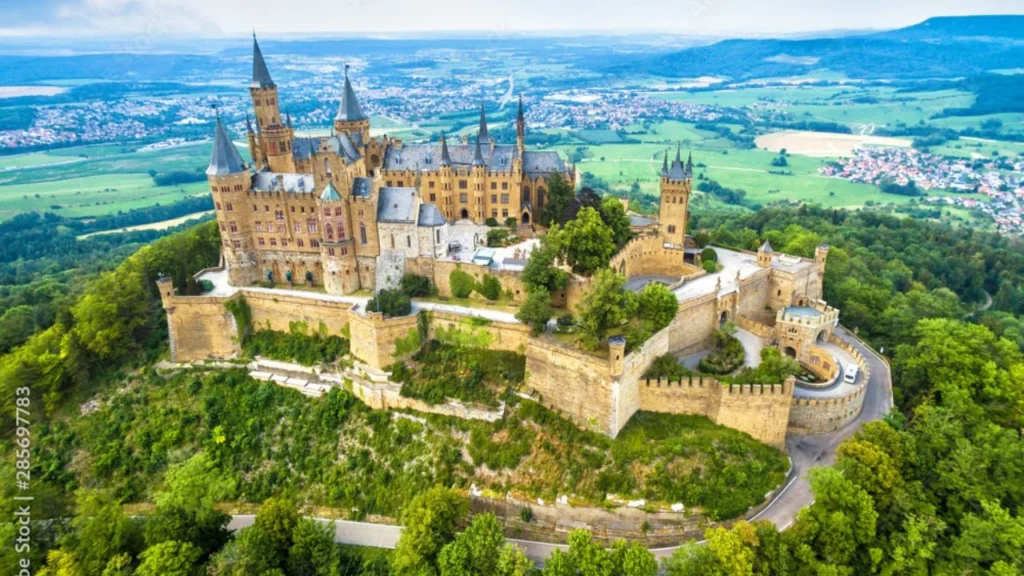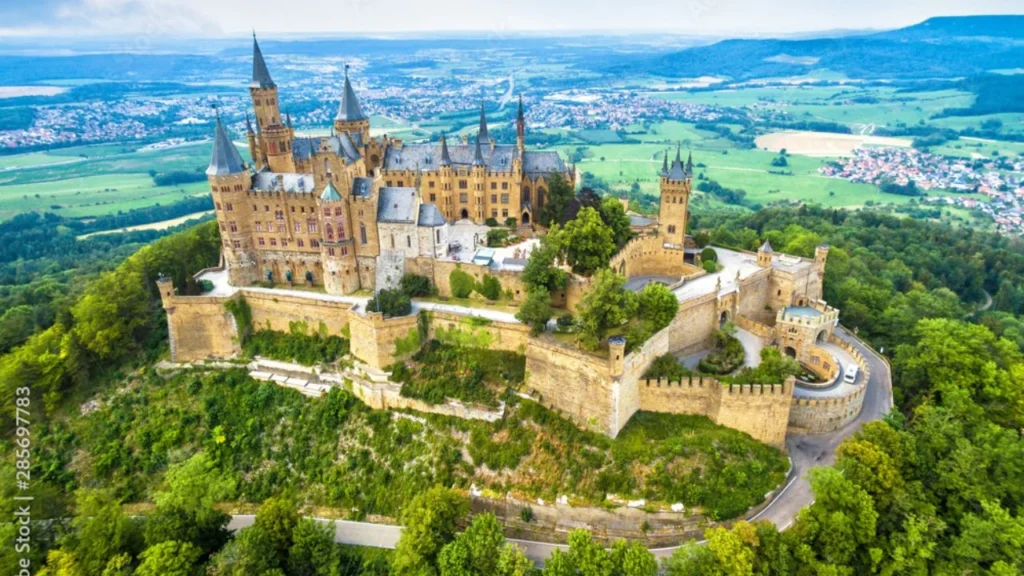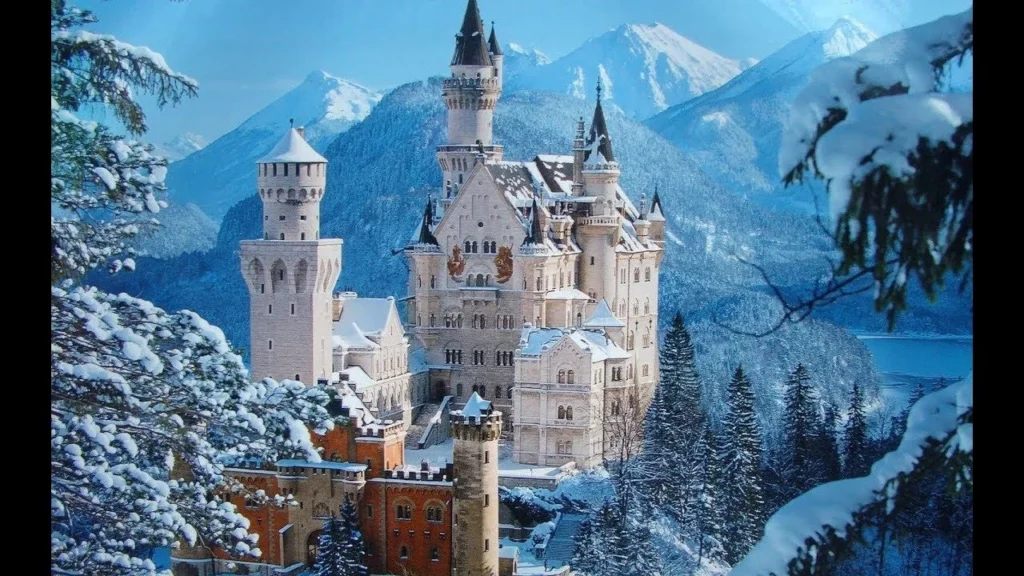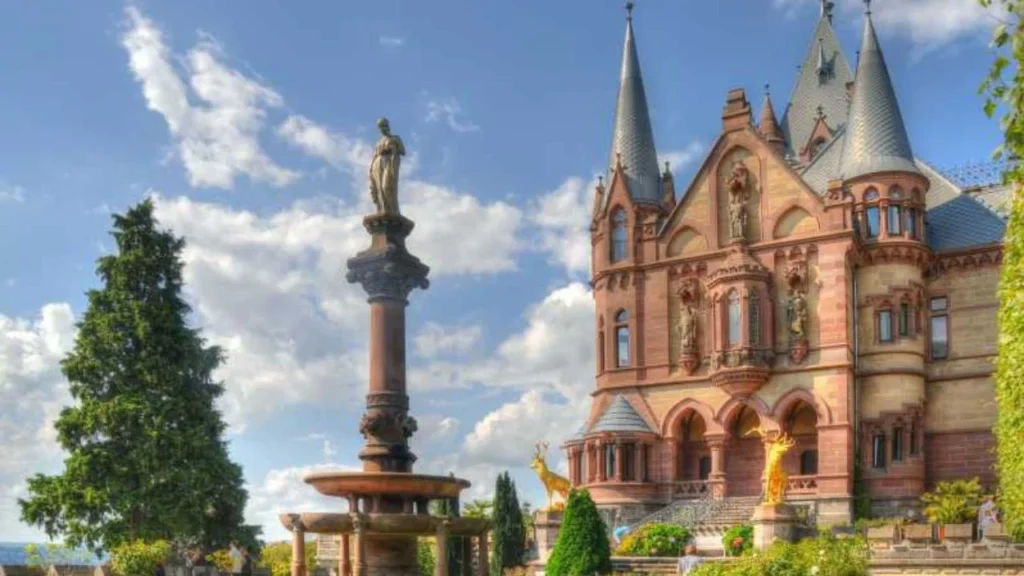It’s acceptable to acknowledge that we have all fantasized about living as royalty. Rather than kissing frogs and hoping that a foreign royal will teleport you to a happily ever after, make your own happily ever after and visit Germany’s most stunning castles.
Germany is the country with some of the best and most well-known castles in Europe. We’ve already reduced it to a select few of Germany’s most exquisite and well-preserved historical sites. This is our selection of Germany’s greatest castles.
1. Hohenzollern Castle

Hohenzollern Castle is situated in the center of Baden-Württemberg, perched on a precipitous, conical rock. German emperors, Prussian monarchs, and Swabian counts and princes have all called Hohenzollern Castle home for centuries.
Nestled between Lake Constance, the Black Forest, and Stuttgart, this proud fortification was constructed in the eleventh century and offers stunning views over more than 100 kilometers of rolling forest.
The St. Michel Chapel is the only part of Hohenzollern Castle that has miraculously survived numerous attempts at destruction and reconstruction over the years. Much of the royals’ ancient treasures are still housed in the building that was renovated in the 19th century in the English Neo-Gothic style. Experience the Treasure Chamber of the castle, which features the glistening armor of the knights, the uniform of Frederick the Great, the Prussian royal crown adorned with diamonds and sapphires, Queen Louise’s silver-embroidered attire, and the renowned snuff box that reportedly saved Frederick the Great’s life.
2. Neuschwanstein Castle

The picturesque Neuschwanstein Castle, dating back to the 19th century, is perched in the Bavarian Alps with a view of the Hohenschwangau Valley. Constructed during a period when castles were no longer tactically essential for protection, the enigmatic Ludwig II insisted on possessing an opulent retreat and gave the order to have it constructed anyway. Ironically, the Romanesque palace meant only for the king opened to the public only a few weeks after his death.Millions of tourists visit Neuschwanstein Castle each year to take in the breathtaking scenery and vistas while also seeing the reclusive king’s secret haven. Neuschwanstein Castle, sometimes referred to as “The castle of the fairy-tale king,” is one of the most well-known castles in Germany thanks to the tale of its fantastical, reclusive ruler, which has attracted considerable attention from around the world.
3. Burg Eltz

Burg Eltz Castle is a stunning stone and timber structure set high on a 70-meter rock in a rural, forested glen. Burg Eltz has been privately owned and cared for by the Eltz family for many generations. They have been responsible for the pristine preservation of the medieval country fortification for over 700 years.
Much of the original furniture and gold, silver, and porcelain treasures are still on display in the castle. To make the most of your trip to Burg Eltz and take in the scenery, embark on an energetic hike through the nearby forest . It will be enchanting to catch a first glimpse of this stunning old stone and timber castle through the trees, with its eight towers towering majestically above the valley floor. One of the greatest castles in Germany, Burg Eltz is a treat for visitors of all ages, set against the backdrop of a gorgeous green valley and a bubbling brook.
4. Schwerin Castle

Schwerin Castle, which was constructed between 1847 and 1857, was once home to grand dukes before coming into state ownership. Schwerin Castle has served as a museum, a hospital, and a teachers’ college in the past.
Surrounded by forests and lakes, Schwerin Castle is made up of several turrets featuring glittering pinnacles and golden domes. Schwerin Castle is regarded as one of the most important architectural works of the romantic historicism era in Europe because of its highly regarded architectural structure and meticulous attention to detail.
Turn into the picturesque garden of this well-known German castle and take in the lovely layout of the orangery’s sculptures, flower beds, and parkways. The gardens of Schwerin Castle, which are regarded as one of the most remarkable baroque gardens in northern Germany, combine French, Italian, and English architectural elements.
Admire the museum exhibits of the castle, which include exquisite living rooms, the throne room, exquisite ballrooms, a painting gallery, the ducal collection of hunting and parade weapons, and exquisite silver and porcelain.
5. Hohenschwangau Castle

Hohenschwangau Castle was a different kind of castle that existed long before the renowned Neuschwanstein Castle was constructed.
Formerly the home of monarchs for a considerable amount of time, Hohenschwangau Castle was abandoned for a while until King Ludwig’s father, Maximilian II, bought it in the 1800s. Hohenschwangau Castle was lovingly restored and redesigned by Maximilian II in the romantic Gothic style, making it the ideal summer and hunting retreat for his family.
Germanic historical traditions were exquisitely painted on the castle’s walls. Many argue that this is what influenced the bashful King Ludwig’s fascination with myths and fairy tales. Ludwig II spent a great deal of time at the castle after Maximilian II passed away, creating chambers according to his own specifications.
6. Drachenburg Castle

The history of Drachenburg Castle is lengthy and fascinating. Built as a private residence in the late 1800s, it was never occupied by the affluent banker who had ordered its construction.
Because of an old legend that a hero killed a dragon on that very hill, the castle is known as “Dragon’s Castle” in German. The eclectic mix of architectural styles that make up Drachenburg Castle is, however, far more fascinating than the name of the castle.
Standing on its wooded hill high above the Rhine River, Drachenburg Castle has dreamlike spires, faux battlements, and a square clock tower that make it look like a cross between a medieval castle, a Gothic cathedral, and Big Ben.




